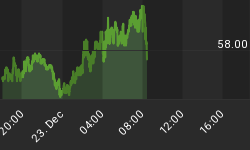The past week has been extraordinary for the amount of violent headlines to cross the news wires. Whether in the form of news of the latest terrorist bombings in London, Egypt and Iraq, or in the form of negative financial and economic news, bad news is seemingly everywhere.
Yet the U.S. stock market has spurned this bad news, at least in the immediate-term, and refuses to decline on what would ordinarily be considered extremely bearish. From a technical standpoint, this is a sign that the bearish immediate-term outlook must be questioned as it shows a stronger-than-normal internal condition.
Even aside from some of the bad news to cross the wires of late, the volume and intensity of the recent terrorist bombing campaigns is enough to question the bearish outlook. One thing I've observed over the years is that whenever bombings make headlines (whether terrorist- or military-related), it normally provides an underlying support for the market and can sometimes even reverse sharp downward trends (such as the Sept. 11, 2001 bombing did for Wall Street). The implication seems to be that bombings = support.
Along those lines, here are some headlines I've clipped just in the last two days:
"Stocks weighted down by gloomy earnings," "Renmibi revaluation and London attacks give investors double jolt," "Fresh wave of bomb attacks in London sparks fears of lengthy terror campaign," "Fear stalks Londoners as they try to get on with life," "Business gloomy over prospect of sustained attack on Britain's capital," "Renminbi's tight rein a damper on U.S. hopes." That's a mini "fear collage" in just 1-2 days! I believe there's enough fear and gloom in those headlines to bolster market for at least a little while and allow for a re-test of the recent highs.
The Lowrisk.com bullish percentage jumped to 53% over the weekend, the highest bullish figure since 1999. The bearish percentage also jumped to 33%, but still well below the bulls. This is instructive since the Lowrisk.com investor sentiment survey, unlike AAII, tends to be geared toward the bearish-to-neutral categories most of the time. While this clearly shows the market is setting up for a potentially big downside move later this fall when the 6-year cycle peaks (most likely September), keep in mind that when momentum is peaking as it now is the market can stay overbought for a seemingly interminable amount of time, much as it did in 1999 the last time we saw a similar investor sentiment number.

The bottom line is that we can't throw out the proverbial baby with the bath water just yet. As long as the 30-day and 60-day moving averages are still up and unbroken there's life yet in this market, which shouldn't be discounted.















